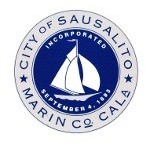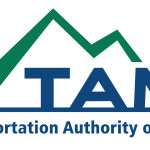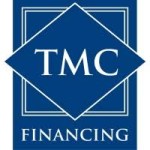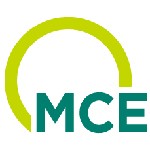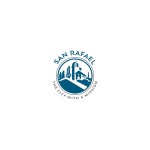01/2023 Blog Topic: Pandemic impacts are cyclical and structural. We must understand both.
January 2023
| As we enter 2023 and anticipate what the year holds for our local economy, it is critical to understand what impacts the pandemic has had and what should be considered cyclical or structural. Among the reasons the 2023 economy is so hard to predict is that we don’t know what is temporary (inflation?) or structural (remote work?). Let’s start by looking at what impacts are envisioned to be cyclical, meaning there is a high degree of fluctuation in the situation expected: E-commerce: As the pandemic hit, consumers underwent a “digital shift” to online shopping. According to Forbes, COVID-19 accelerated the growth of e-commerce by 4-6 years. However, sales via e-commerce have significantly declined as consumers shift back to in-person shopping. Over the next three years, e-commerce growth is expected to average between 4-5% by 2026 due to a mixture of preferences and economic conditions that, as of now, suggest slower economic growth. Despite e-commerce slowing as a form of commerce, Marin retailers likely won’t slow momentum towards accommodating both online and physical purchases. Consumers will continue to want goods and services “just one click away.” Commercial Real Estate (CRE): Real estate is always cyclical and despite the many warnings of commercial real estate’s doom early in the pandemic, many markets have either been resilient or experienced limited impact. In Marin County, where the limited volume of Class A properties keeps the price relatively stable, we haven’t experienced a precipitous drop in vacancy like our neighbors to the south (see “San Francisco”). While there was the exit of one large company (Autodesk) that could skew the vacancy data, albeit temporarily, most CRE firms operating in the market predict Marin to be stable, but with caution for 2023. With many office buildings owned by local owners, there isn’t expected to be a lot of turnover of properties, especially with higher relative interest rates. Although some larger footprint spaces, such as the Fireman’s Fund and Northgate Mall properties have been targeted for reconfiguration that includes housing, there aren’t many other properties in the county that might be candidates for such a transformation. We haven’t yet seen the impact of remote work on the CRE sector in terms of high vacancies, and more companies are signaling a return to office, perhaps even at a greater rate than the current hybrid approach (see “Twitter”). Where there does remain concern (and where officials might have to get creative) is the downtown retail segment. Consumption: At the outset of the pandemic consumers put a premium on all goods and services that made their homes more comfortable or efficient for work. Exercise equipment sales also skyrocketed, with bike stores barely able to keep inventory. For Marin retailers, it became a story of what you sold – you either experienced record sales or were barely able to keep afloat as the world shut down. Along with high demand came troubles in the supply chain which also affected consumption – even those retailers who could sell didn’t have the inventory to do so (think cars). Fast forward to the post-pandemic environment and observe how larger retailers are having to dump inventory. For example, while sporting goods retailers have been able to replenish inventory, consumers over-purchased in some cases and the used sporting goods market has surged with inventory, leaving local retailers flush with expensive inventory. Meanwhile, very important to the locally serving Marin economy, people have returned to in-person activities including restaurants, gyms, and movies (although not yet at pre-pandemic levels). According to the U.S. Census Bureau, U.S. selected services total revenue for the third quarter of 2022, was over $5 billion, an increase of 2.2 percent from the second quarter of 2022 and up 9.0 percent from the third quarter of 2021. Perhaps of greater interest is where we perceive structural changes in the economy and how that may affect performance going forward. Remote/hybrid work: As companies continue to determine their workplace policies, there is broad consensus that remote and hybrid work is here to stay. As reported in the North Bay Business Journal, a Nelson Staffing survey of 140 employers showed 40% of employers had chosen a hybrid model, 24% required workers back in the office full time, and 12% were letting employees decide where they want to work. Marin County already had a relatively high number of people working remotely or from home prior to the pandemic. The Bay Area Council estimates that at least 38% of current Marin jobs could be performed remotely although that does not account for the many sole proprietors or others that do not typically rely on an office. One of the opportunities generated by the evolution of remote work is the proliferation of non-degree jobs that can be performed remotely. Jobs such as data entry, customer service/scheduling, even some certification-based software jobs may provide the same benefits of remote work (thinking about childcare here) that have traditionally been reserved for the professional class. Public gathering activities: Although it is noted above that the services sector is recovering due to people’s desire to be in physical spaces, that doesn’t mean that all public gatherings are back to normal. For starters, many of the venues, including medical offices or even private venues still have COVID protocols in place. Masking in the grocery store, movie theatres, or on planes is still a common sight. When MEF speaks with Chamber of Commerce leaders or businesses themselves that rely on in-store consumption, there is broad consensus that a certain percentage of the population will not gain the confidence to be “out and about” at pre-pandemic levels. In the business meetings environment, there remains an interest for in-person meetings and events yet the evidence does not yet suggest this format maintains the appeal it once did (in 2020 MEF hosted a conference that had over 300 attendees; in 2022 the total was just 75). Job quality and benefits: The pandemic was noted for shining a light on the relationship individuals have with their employers. Beyond the approach to health and safety that employers had to consider, job responsibilities and benefits came under scrutiny by employees. What started as a fair debate about sick leave policies opened the door to discussions about hours, wages, and benefits, especially those like maternal or bereavement leave at the height of the pandemic. As these debates were raging, disenchanted employees began a wave of quitting which became the “great resignation” and metrics like the “quit rate” exploded. Some employees chose to quiet quit, which was more challenging to employers who observed productivity rates drop (see “Salesforce layoffs”). These cyclical and structural changes appear in the Marin economy everyday and support the need for strong employer-employee dialogues and careful analysis of the national, state and local economic conditions. MEF views the structural changes to the economy as both positive and negative, but that depends on the specific business. It suggests that business owners and entrepreneurs are going to have to consider these impacts in ways they may not have had to just 3 years ago. |
Mike Blakeley, CEO
Marin Economic Forum
Tags: blog



